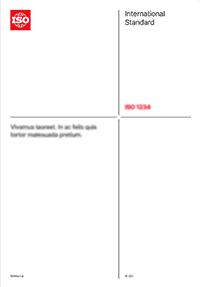Тезис
This document specifies a method for the identification of single fish and fish fillets to the level of genus or species. It allows the identification of a large number of commercially important fish species using DNA barcoding.
This method was validated on raw fish. Laboratory experience indicates additional applicability to processed fish products (e.g. cold smoked, hot smoked, salted, frozen, cooked, fried and deep-fried samples).
The described method is usually unsuitable for the analysis of highly processed foods (e.g. tins of fish with highly degraded DNA where the fragment lengths are not sufficient for amplification of the targets). Furthermore, it does not apply to complex fish products containing mixtures of two or more fish species.
The identification of fish species is carried out by PCR amplification of either a segment of the mitochondrial cytochrome b gene (cytb) or the cytochrome c oxidase I gene (cox1, syn COI), or both, followed by sequencing of the PCR products and subsequent sequence comparison with entries in databases.
Общая информация
-
Текущий статус: ОпубликованоДата публикации: 2024-09Этап: Опубликование международного стандарта [60.60]
-
Версия: 1
-
Технический комитет :ISO/TC 34/SC 16ICS :67.120.30
- RSS обновления
Жизненный цикл
-
Сейчас
-
00
Предварительная стадия
-
10
Стадия, связанная с внесением предложения
-
20
Подготовительная стадия
-
30
Стадия, связанная с подготовкой проекта комитета
-
40
Стадия, связанная с рассмотрением проекта международного стандарта
-
50
Стадия, на которой осуществляется принятие стандарта
-
60
Стадия, на которой осуществляется публикация
-
90
Стадия пересмотра
-
95
Стадия, на которой осуществляется отмена стандарта
-
00


